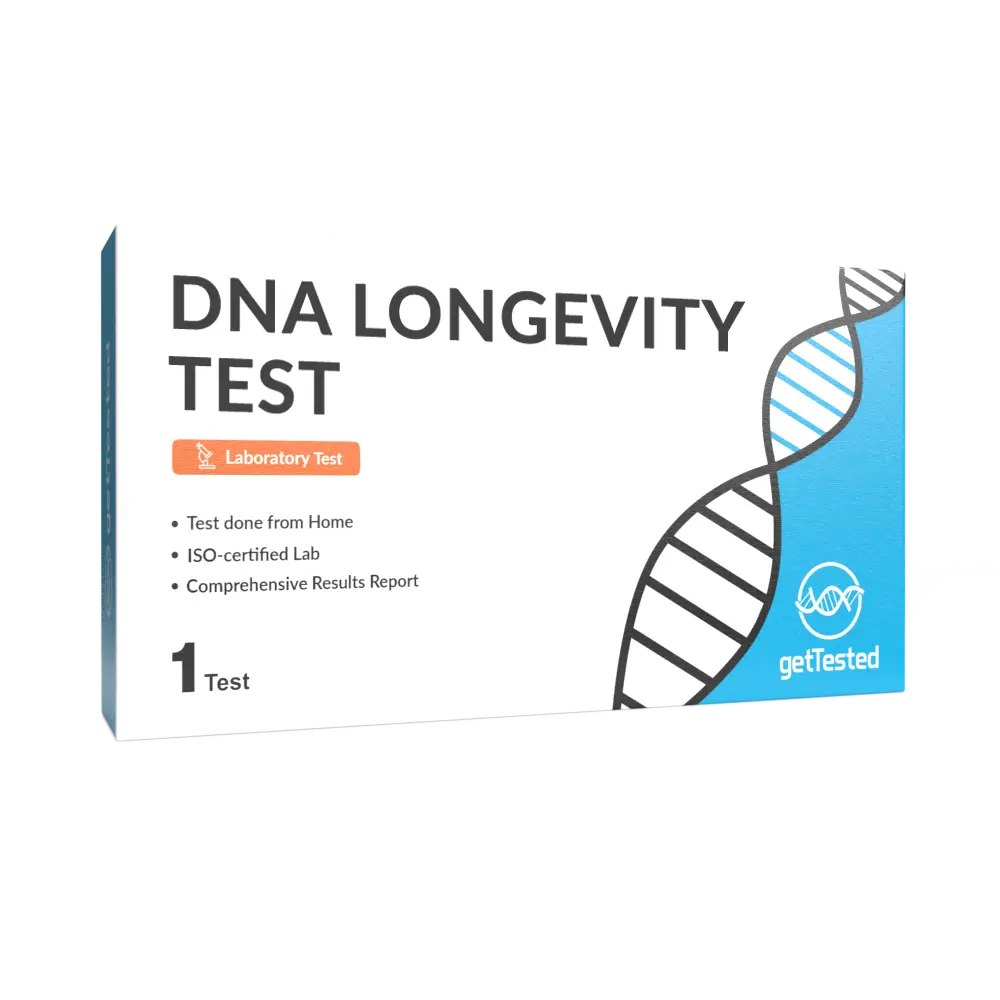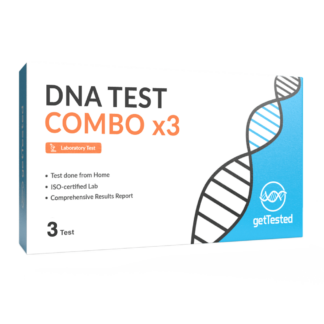DNA Longevity Test
We offer two types of tests; Lab Tests and Rapid Tests. This product is under the category Lab Tests. See all our Lab Tests by following the link.
See allWe offer several different options of testing methods. This test is done with Saliva. See all tests done with Saliva by following the link.
See allThe DNA Longevity Test from GetTested is designed for anyone seeking insight into their genetic predisposition for aging and long-term health. It is ideal for those curious about how their genes might affect their lifespan and well-being, including risk factors for age-related conditions. Understanding your genetic makeup enables you to make informed decisions to support your health and well-being over time. The test report provides detailed insights and recommendations based on your unique genetic profile.
The sample is easily collected via a saliva test and sent to our lab for analysis. The price includes return shipping to the lab. Within 6-8 weeks, you’ll receive your detailed results digitally.
Save more by bundling DNA tests. Order multiple tests together for better value from our wide range.
- In stock
- At-home test
- Results 6-8 weeks

Get 5% off on 2 Lab tests, and 10% off on 3 Lab tests or more.
What Does the DNA Longevity Test Analyse?
Who is the DNA Longevity Test Suitable For?
The DNA Longevity test is ideal for anyone interested in personal health and preventive care. It is particularly valuable for those seeking a deeper understanding of their genetic composition and its potential impact on aging.
How Does It Work?
It’s simple – collect your saliva sample comfortably at home and send it back to us in the provided prepaid envelope. Our laboratory will analyze your sample, and you will receive your results digitally within 6-8 weeks. Your unique test ID ensures total anonymity and security.
Test Report and Recommendations
Once your results are ready, you will receive a comprehensive response report from GetTested that explains your genetic insights and what they mean for you. Additionally, the report includes personalized recommendations and strategies to optimize your health based on your genetic results.
Privacy and Security
After the analysis, both the DNA and the original sample material are destroyed. There is no personal connection to your sample other than your unique test ID. We guarantee that your data is completely anonymized, and the laboratory has no information about the sample's owner. We do not share your results with third parties, and you have the option to delete them after review.
FAQ
How is the DNA Longevity test carried out?
How quickly will I receive my results?
When should I take the test?
Example Report
Example of DNA Longevity Test
Reviews
-
Am a healthcare professional who is starting to provide genetic testing for my patients . This would include advice based on genetic testing on improving lifestyle etc Would like to know if I can use your genetic tests for this purpose and explore ways of working togetherHi Mo! I would suggest contacting us directly at hello@gettested.co.uk, where the right person will be able to assist you with your inquiry.
Related Products
-
DNA Brain Health Test
GetTested's DNA Brain Health test provides a detailed genetic analysis of 288 genes t...£ 159,00 Add to cart -
DNA Combo 3 - Order any 3 tests
You can combine any of our DNA tests to get a discount. Combine any 3 reports for £ ...£ 279,00 Add to cart -
DNA Diet & Nutrition Test
DNA Diet & Nutrition from GetTested is a health test that analyses your genetic v...£ 159,00 Add to cart -
DNA Immunity & Inflammation Test
The GetTested DNA Immunity & Inflammation test reveals your genetic tendencies to...£ 159,00 Add to cart -
Nutrition Test
GetTested's Nutrition Test is our most detailed nutritional analysis, measuring 12 ke...£ 99,00 Add to cart
You may also like…
Trusted by over 10.000+ customers


“The home test was straightforward with easy to follow instructions. The test result was detailed and clear in its presentation. Also had the opport...”
Richard

“We looked at a lot of companies offering the same services but made the decision to go forward with get tested because the labs are based here in t...”
Natasha

“There are other providers out there, I have tried 3. Gettested was the fastest and the customer service was the best. I even received my test on th...”
Alan

“Absolutely perfect, results came after few days and finally after a lots of times visited GP, we finally know why my son has eczema - he is allergy...”
E

“I found them to be professional and not too long a wait for results. Helpful with any after questions. Will be using them again if need be. I highl...”
Eileen

“I really value my test and to see the results. It is a jungle when your health is online. So get accurate and precise knowledge is a gift, as it is...”

































Leave a Reply